Monastero Hotel
noa* network of architecture used the original charm and architecture of a 17th century monastery to create Monastero Hotel, a space of peace and meditation for those visiting Arco, Italy.
To restore the majestic power and spiritual dimension of an old monastic centre and make its most distinctive elements the main features of a unique and charming hotel, was the mission pursued by noa* in the project to renovate the Monastery Serve di Maria Addolorata in the centre of Arco, situated at the northern tip of Lake Garda. This noble complex with its’ extensive garden, is encompassed by a high surrounding wall and dates all the way back to the second half of the 17th century. Half of the Monastery building, which also hosts a church and cloister, where nuns continue to live, has been left untouched and in 2020 work on the hotel project began in close collaboration with the Trento Office of Cultural Heritage.
In the garden, the spa is inspired by certain typical rural constructions, which can be found on the lakes shore.
(Re)Birth
With its 40 rooms (including 2 suites), the Monastero Arx Vivendi – the name of the new hotel – offers hospitality in full harmony with the spectacular location.
From a design perspective the underlying idea was to maintain the typical monastery architecture, preserving the original design of the internal paths and extending its geometrical rigour to the new volumes, paying close attention to the choice of materials and colours.
And that’s not all. The surrounding agricultural landscape also played an important role, inspiring the architecture of the light glass constructions that house the Wellness area and creating a symbiotic relationship between history and the land.
Old Spaces, New Functions
Completely enclosed by a 7-metre high boundary wall whose original appearance has been preserved, internally the monastery is distributed across three levels.
As such, the development of the common spaces on the ground floor emphasised the existing plan of the monastery – located along the central axis is the reception, the breakfast room and a reading room/lounge, all embellished with beautiful rib vault ceilings and surrounded by a long continuous corridor. The bar and kitchen are also situated on the ground floor. A suite with a private garden was also created on this level.
The scenery changes on the first floor where the majestic central corridor is lined by ceiling beams which stretch out to an impressive length of almost 50 metres. Here, the former monastic cells, aligned along the sides, were joined two-by-two to create larger rooms (from 22 to 30 square metres). In this way, in each room one ‘cell’ constitutes the bedroom, while the other hosts the bathroom. The old doors, in light wood, were all conserved on the external side, along the hallway, to maintain the striking spectacle of the entrances that dotted the long corridor. The first floor also offers one suite that was developed from the part of the building that originally hosted the wash rooms and bathrooms.
The second floor is no less striking. A large loft area topped by eye-catching trusses, which host two lines of rooms that open out onto a long central corridor. The restored wooden trusses pay homage to their original function. At the highest point of the roof, a skylight runs right along the length of the ceiling, not only illuminating the corridor but also the rooms thanks to the transom windows.
Design: noa* network of architecture
Photography: Alex Filz

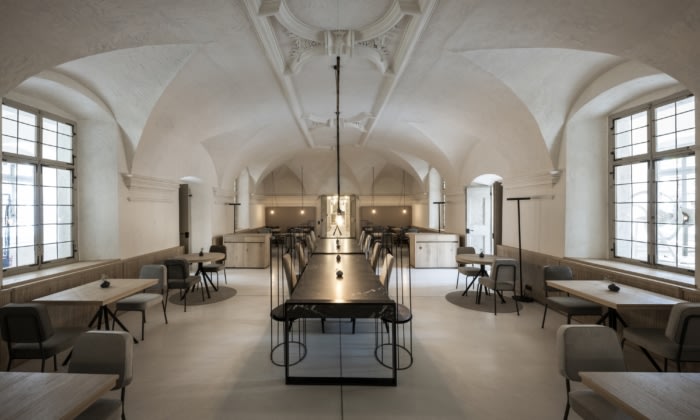
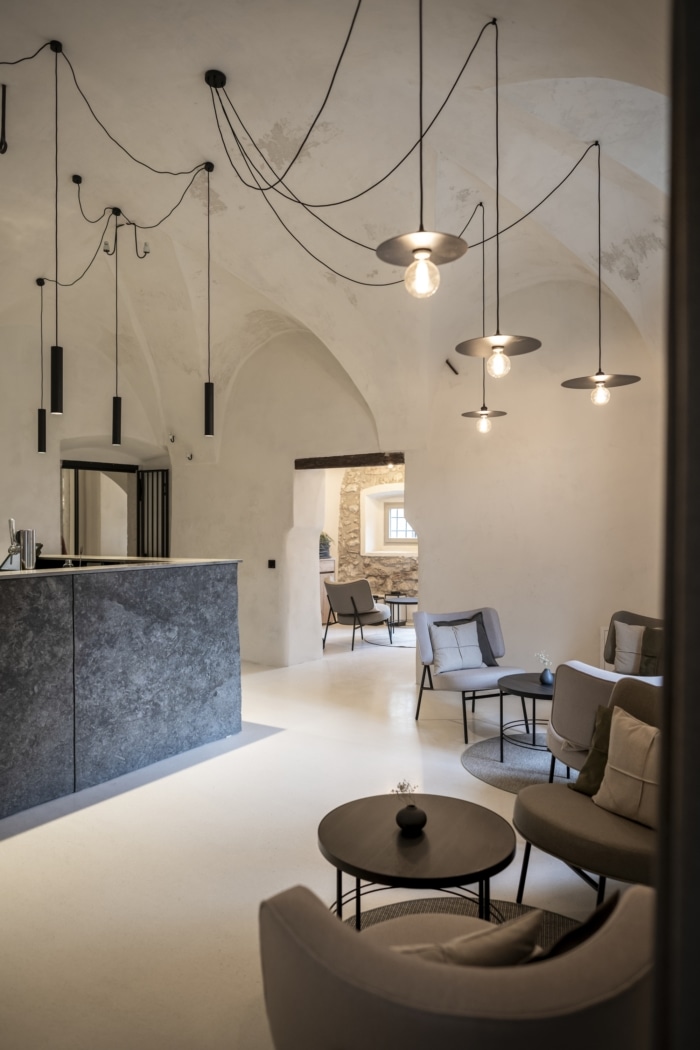

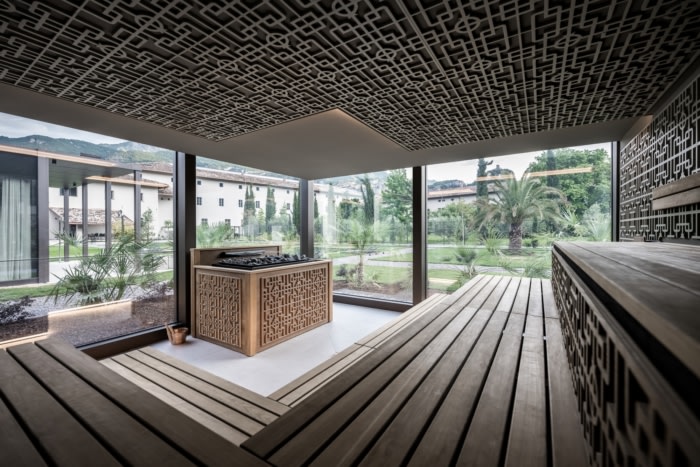

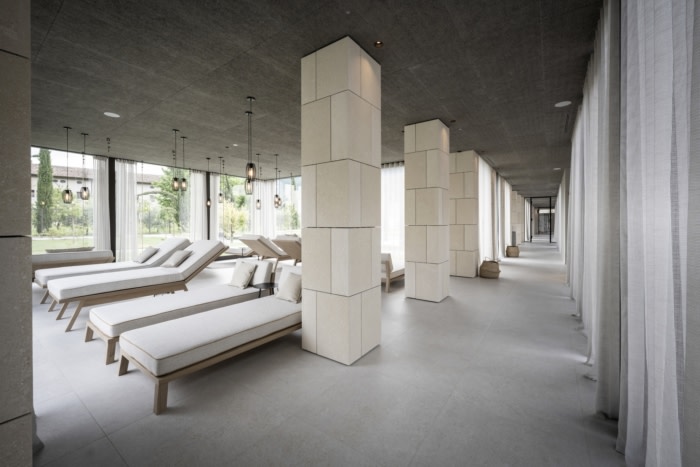
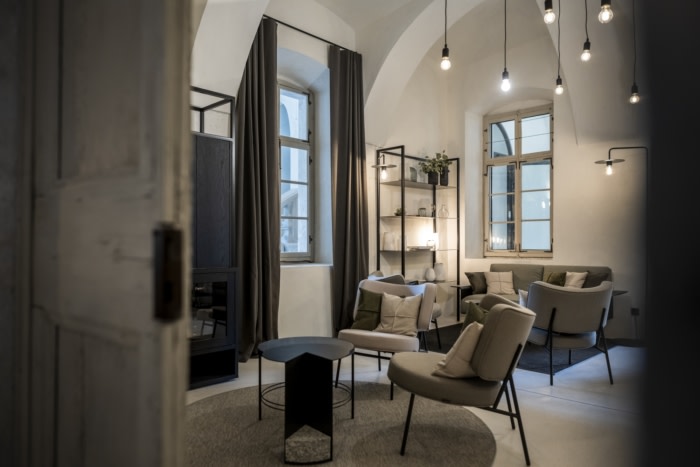
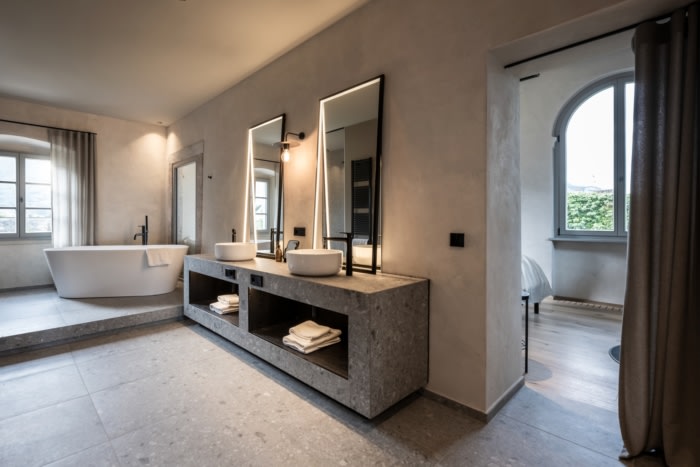

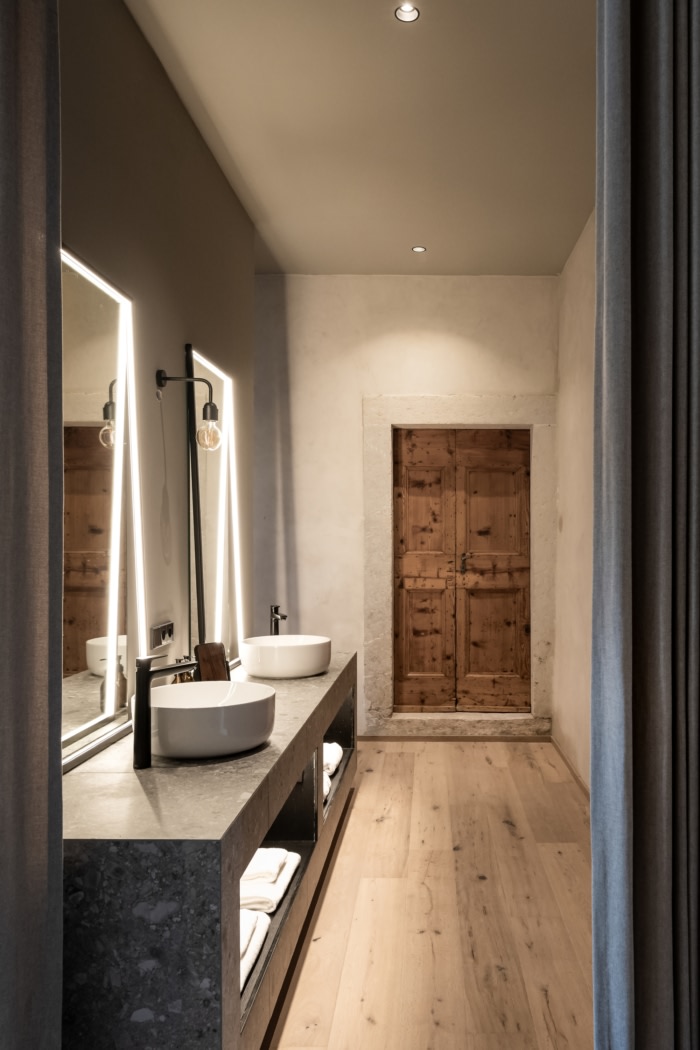
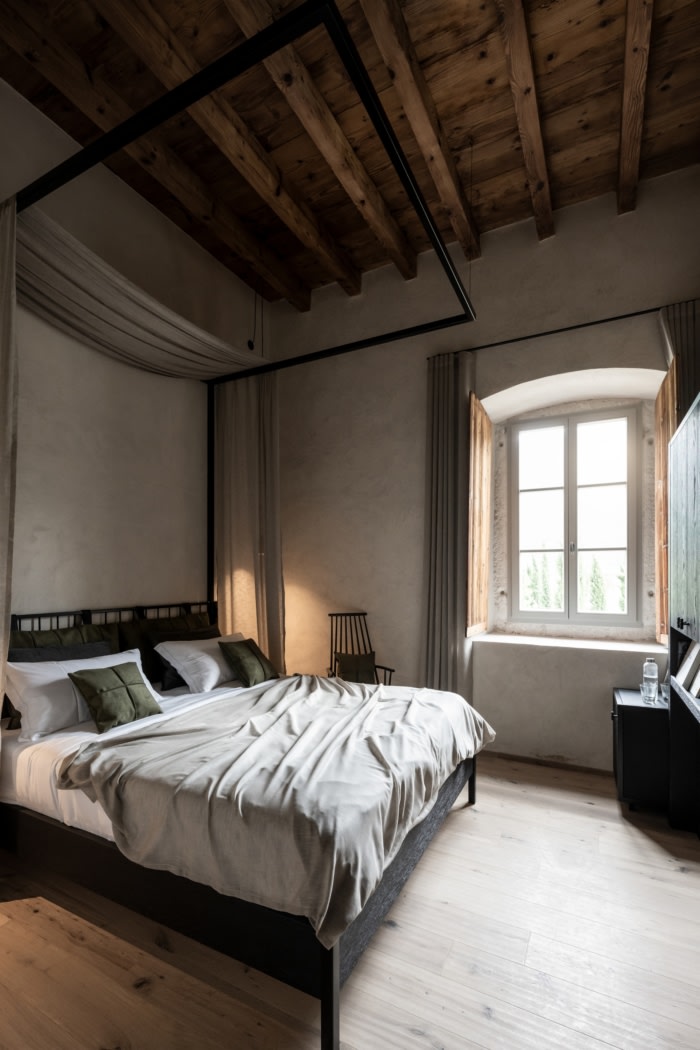
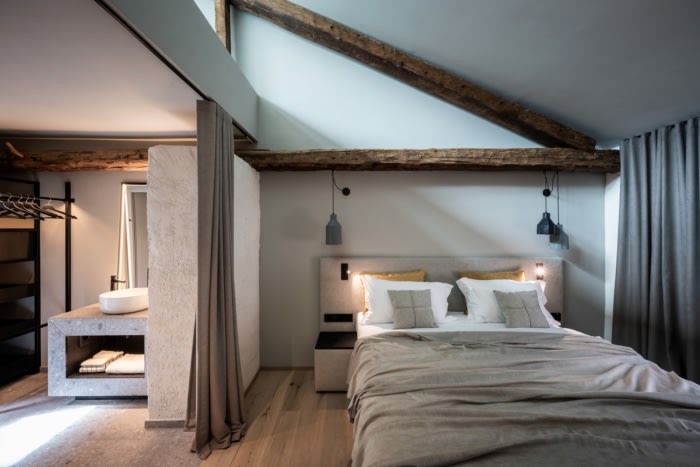
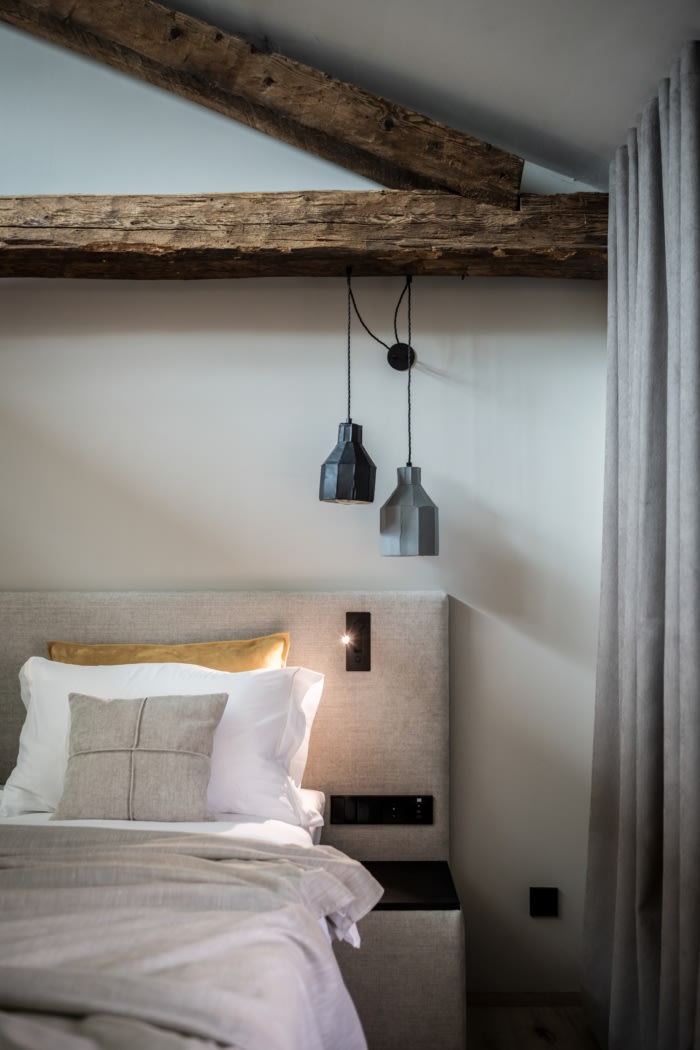




Now editing content for LinkedIn.